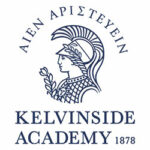That was the question Gareth Sturdy posed on Twitter recently. And whilst I voted for ‘false’ (without the greatest conviction I have to admit) I also pointed out to Gareth that he might have got a rather different result had the question been phrased “Not everything worth doing in education can be measured”. That, he said, was “actually my reason for asking the question. What” he continued, “is it that we measure that is worth doing so?”
For me, society’s seeming infatuation with measuring everything can, I believe, hinder innovation. The question I frequently get asked is “but where’s the evidence?” when we look at the creation of learning environments that are anything but the standard columns and rows approach – one where didactic direct instruction rules the day. I interviewed Toby Young once for LearningSpaces magazine, asking him why, at West London Free School (which he co-founded) the headteacher had told me he’d written on the board at the front of a classroom (after the teacher, there, had moved the furniture into collaborative clusters) “in this school we teach in rows”.
“Project Follow Through” he replied. The biggest research project in the world that pitched different pedagogical models against each other, proved that direct instruction was the most effective. Run between 1966 and 1977, this remains the biggest, best funded and most comprehensive study in the world.
Only it ended over 40 years ago. And nothing’s changed since has it?
Yet to measure whether a particular environment has any positive impact on the learning experience of a student is particularly difficult to do. The ethics are manifestly complex, the time frame enormous (“But where will they be in five years time?” asked a particularly aggressive (and both anonymous and subsequently deleted) Twitter account recently of Agora School) and having done so, against what criteria have you judged the outcome? But is that a reason not to do so?
The headteacher of a school we’re working with recently told me that the weekend before we’d met, he’d attended a christening at the chapel of Merton College in Oxford. His children, aged 3 and 5 had, without prompting, been utterly calm for the 45 minutes of the service. “The aura of the space” he said “clearly had an impact on how they behaved”. Coincidence? Not so, would suggest Dr Tim Holmes, a consultant neuroscientist with whom we work, because there’s ample evidence that environments affect behaviours. And if you do want empirical evidence, Dr Dieter Breithecker conducted a 5 year study into movement and cognition – one that proved that the person who coined the phrase “sit still and concentrate” was either deluded or just simply wrong.
Of course there’ll be detractors. Schools such as Michaela School or Magma Academy where there appears to be a sense of authoritarian dictatorship that characterises everything they do. “Leave it to the professionals” they harp when people like me start to question the environments in which they teach. Well I’m a design professional – I’ve spent 30 years creating environments that support the activities that go on in them, and irrespective of whether or not I can prove, empirically, that what I suggest is wrong, that doesn’t automatically suggest it’s not right either. And there are schools such as Learnlife in Barcelona, High Tech High in America and Big Picture Learning both in the UK and America as well as Acton Academies and the Lindfield Learning Village in Sydney all of which (and they’re by far from being alone) are questioning what, where and how we teach the next generation. So we’re not alone, and neither would you be.




















